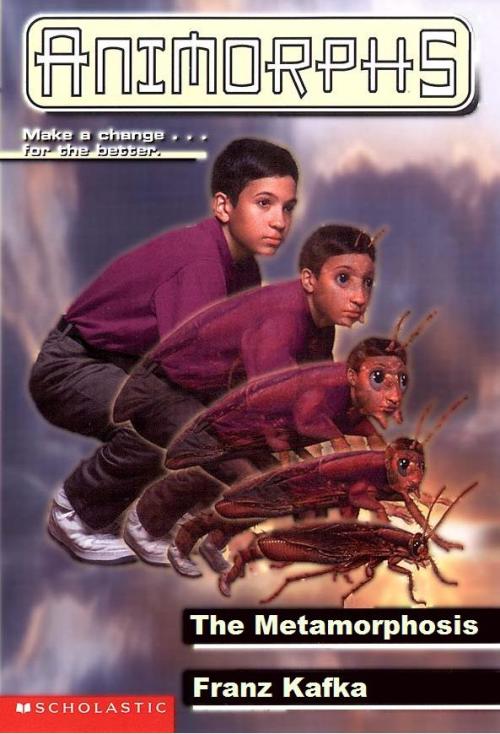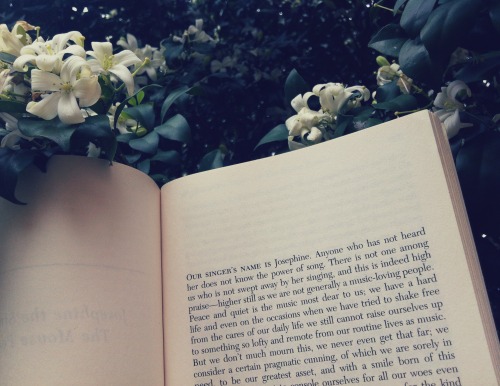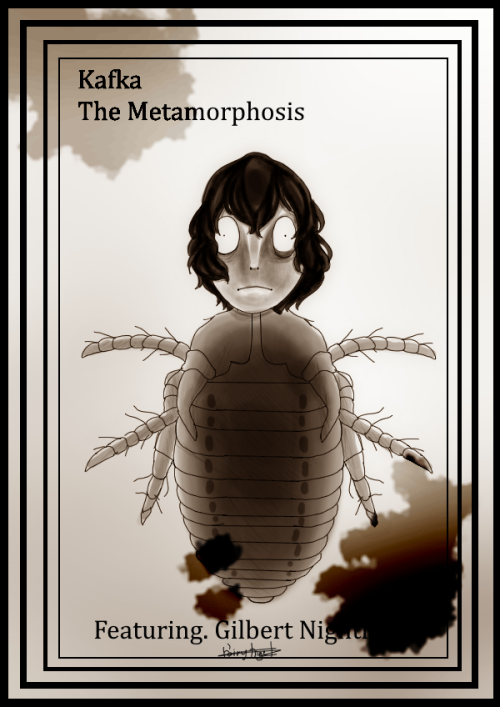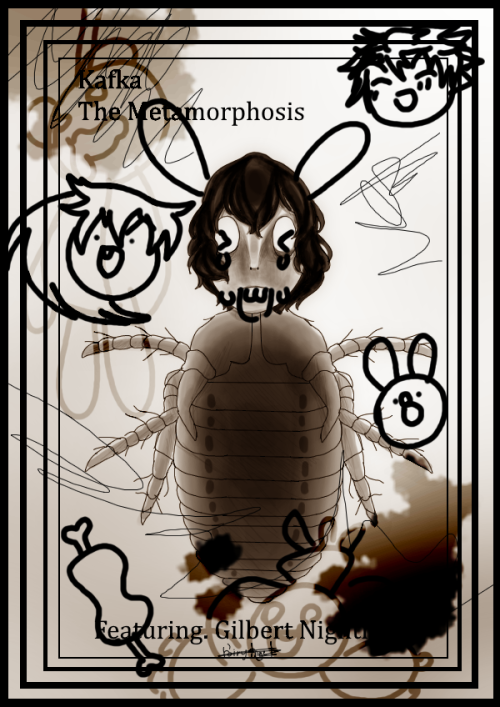#the metamorphosis
Our Book Bracket finalists prepare for battle in not dissimilar ways: one walks around Dublin hating himself, the other crawls around his house being hated. And both are ultimately transformed.
Throw your weight behind Joyce or Kafka here! The winning title—and winning submitted bracket—will be announced on Monday afternoon.
Post link
an apple a day keeps anyone away if you throw it hard enough
All I can think of is “poor Gregor.“

Franz Kafka’s the metamorphosis, 1915

[Text ID: “And what I really intended to say in the end remains unsaid.” —Franz Kafka]
Credit to thecrimsonwords on IG
“Josephine the Singer, or the Mouse People” by Franz Kafka, from The Metamorphosis and Other Stories (1924).
Josephine the Singer // Franz Kafka.
Post link

Inktober Día 01 - Gregorio Samsa
Una mañana, tras un sueño intranquilo, Gregorio Samsa se despertó convertido en un monstruoso insecto. Estaba de espaldas sobre un duro caparazón y, al alzar la cabeza, vio su vientre convexo y oscuro, surcado por curvadas callosidades, sobre el que casi no se aguantaba la colcha, que estaba a punto de escurrirse hasta el suelo.

Short version: Graphic retelling of Franz Kafka’s novella, wherein Gregor Samsa randomly awakens one morning as a giant cockroach. His family is horrified and repulsed, and as his humanity wanes further and further, the family must decide between accommodating him and balancing their finances, as he had been the primary breadwinner. It goes poorly for everyone.
What I thought: Because this is an abridged version of an otherwise jaw-dropping tale, the storytelling is perhaps not what it could be. That is not Kafka’s fault. You should go and read the original immediately. The problem is that the original was already trimmed down to its absolute skeleton, and the graphic version cuts away even further until we’re left with just the events, and very little of the commentary.
I loved the original story. It’s body horror at its best, something to chill even the most hardened of skeptics; sure you could be afraid of the unexplained nature of Gregor’s transformation, because bugs are gross and they do gross things. But how much more complicated it is! I always felt it was a metaphor, maybe for the difficulties that surround a sick family member, or one who has suffered some disfiguring injury. Gregor’s family can barely remember that he is still their Gregor, disgusted as they are with his body, and eventually assume that he can’t even understand them because he cannot speak.
Does anyone here fear getting old? You should. I first read this story while my ailing grandmother was spending her last weeks at our house, and it kept me wide awake for days.
Regarding the art, I thought Kuper’s illustrations fit the story perfectly. The harsh black and white, the thick outlines that are a lot like a 1960′s political cartoon (actually, they are exactly that–Kuper is the artist behind Spy Vs. Spy), the sharp crosshatching, all of it is exactly as nasty and grotesque as the story itself. It’s hard to look at in all the best ways, taking the style right into the surreal tone of the thing. I may not love the paring down of the text, but the art makes up for it.
Read if you liked: Johnny the Homicidal Maniac by Jhonen Vasquez, Salem Brownstone by John Dunning, Black Hole by Charles Burns, The Crow by J. O’Barr











